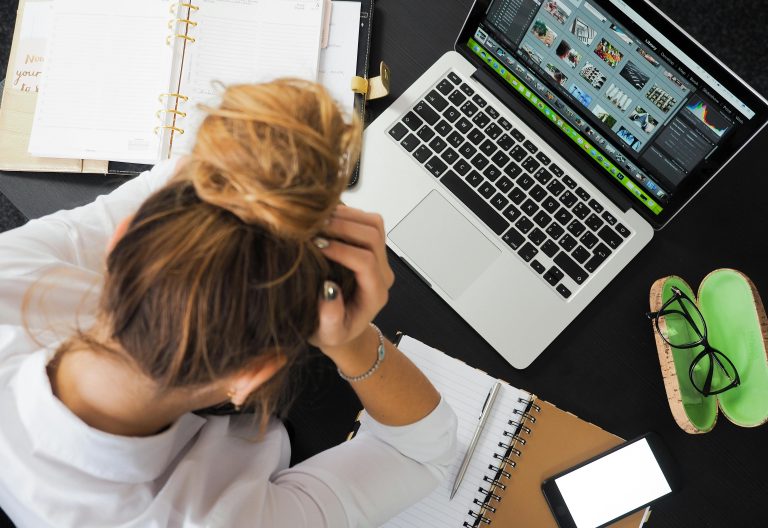Women have less time to work out than men and their health pays the price

After a full Saturday shuttling her two kids to soccer and playdates across New York City, Neha Ruch, 39, finally carved out a few precious minutes to exercise at 6:15 p.m. She didn’t even bother to change clothes before hopping onto her elliptical machine in a closet-turned-home-gym.
After 15 minutes, the interruptions started. First, her husband poked his head in — their daughter was pleading for her to say goodnight. No problem, Ruch thought. She sat with her daughter for a while and then came back to the machine.
But just as she was breaking a sweat, her son wandered over, asking for help finding something to do. She sighed and turned off the machine.
“I had left the door wide open,” she said. After helping him, she surrendered to the couch.
It’s a story that’s played out in millions of homes, as women feel pulled between taking care of themselves and taking care of family. In one recent study of 400,000 Americans, only 33% of women met weekly recommendations for aerobic exercise, as opposed to 43% of men. Other studies, including a 2017 study of 147 countries, have confirmed this phenomenon across ages and demographics.
Experts say this exercise gender gap has a lot to do with the disproportionate amount of time and labor women devote to caring for the home and for others. It’s also consistent with research suggesting that, on the whole, women tend to prioritize other people’s health above their own, experts said.
“They make the time for themselves when there is no one else to be taken care of,” said Stephanie Roth-Goldberg, a clinical social worker and therapist in New York. Among her patients, the attitude is, “Where can I sneak this in?” she said.
Over time, this exercise shortfall can have serious implications on women’s health and quality of life. While women live an average of six years longer than men, they spend a greater percentage of their lives in poor health, suffering from conditions like heart disease, diabetes or depression. And yet a 2024 paper suggests that, compared with men, they may benefit more from the same dose of exercise.
“Doing something was better than nothing for both,” said Dr. Martha Gulati, the study’s co-author and the associate director of the Barbra Streisand Women’s Heart Center at Cedars-Sinai Hospital. But, for reasons not fully understood, “women get more bang for their buck.”
Where does the exercise disparity come from?
The gender gap starts in childhood, and the older we get, the harder it is to close, according to researchers.
For example, starting in their tweens, young men still generally have greater access to sports facilities and athletic opportunities than young women, said Melissa Bopp, a professor of kinesiology at Penn State University who studies exercise and gender. In 2019, about 3.4 million girls played high school sports, more than 1 million fewer than boys.
As a result, she said, more men than women enter adulthood feeling confident in their physical abilities and comfortable in settings like gyms and weight rooms. Women also report feeling less safe when exercising, she added, and report much higher rates of harassment than men.
Even when they do feel comfortable, women may not always experience the same emotional benefits. “Men often report that they’re exercising because they actually enjoy it,” Gulati said, while research suggests that women are more likely to work out for appearance reasons, such as losing weight, which can make it less of a stress reliever. “If we don’t find joy, we won’t necessarily carve out time for it.”
It’s just a matter of time
Experts say the greatest barrier to exercise for many women is free time — specifically, social norms informing how women should spend it, and the division of labor at home. Women, on average, have 13% less free time than men, according to a 2024 report, primarily because they shoulder more unpaid household work.
The report also found the group with the least amount is 35- to 44-year-old women, who have an hour less daily free time than their male counterparts. Even in homes where men and women share domestic responsibilities, women often find themselves with less control over their time, said Eve Rodsky, a writer and activist.
When researching her book “Fair Play,” which offers solutions for more equitable divisions of labor, Rodsky interviewed 500 couples and found that men tended to take on responsibilities that they could plan around their work and leisure schedules, such as mowing the lawn or making home repairs. Women were more likely to shoulder tasks that had to be completed around other people’s schedules, she said, such as making kids’ lunches before school or cooking dinner.
A 2023 survey found that only 4% of mothers considered their own health as a measure of their success, while 31% saw their children’s health in these terms. For some women, having to plan their workouts around other people’s needs can mean sacrificing sleep, Roth-Goldberg said, or social opportunities. “The roles that we typically play in our household aren’t going to shift just because we decide to run a marathon.”
But even with these sacrifices, making time to move in a way that boosts your physical and mental health is often worth it, she added.
How to claim more exercise time.
One way to move more is to find a workout buddy.
“For women in particular, having someone to exercise with is very important,” Bopp said. Not only can it create accountability, she said, but it can also “help make you feel more comfortable in an exercise space.”
Another trick, if you struggle putting your desire to exercise ahead of other people’s needs, is to reframe physical activity as being a part of your caregiving, Bopp said. In other words: “Take care of yourself so you can take care of others,” she said.
Lastly, remember that any movement is better than no movement, and grabbing a few minutes for yourself throughout the day can have a big impact over time, Gulati said.
And perhaps most important, experts said, celebrate the movement you are able to fit in. Among the couples she interviewed, Rodsky found that the women who successfully kept up long-term exercise routines were the ones who showed themselves compassion for ebbs and flows along the way.
As for Ruch, who founded an advocacy group for women who choose to pause their careers after children, she’s working on “feeling good about the ‘good enough’ workout. For right now.”















